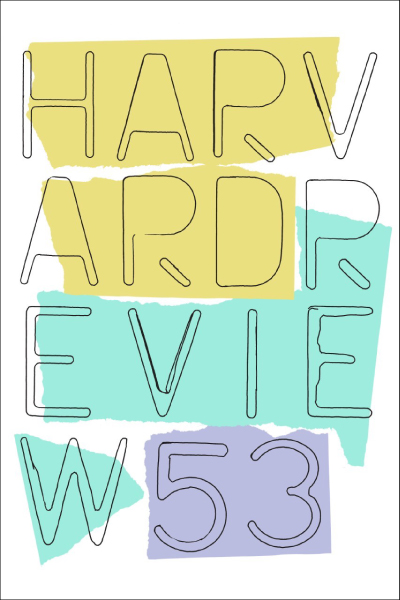HR 53 Editorial
by Christina Thompson
As we were going to press, the literary journal Tin House announced that its twentieth anniversary issue would be its last. The organization will go on publishing books and hosting workshops, and the magazine will continue online, but, the costs of production being what they are, the days of the print journal are over—just two decades after they began. Almost in the same week, however, there was what felt like a countervailing announcement. The Yale Review, after a year-long search, reported that they had chosen a new editor: the accomplished writer and editor Meghan O’Rourke, who will begin her new job in 2019 on the two-hundredth anniversary of the founding of the review.
We all hate to see a print journal vanish. I still remember how dismayed I was in 2003 when Boston University allowed the storied Partisan Review to fade ignominiously away. But, although the environment for print publications is unlikely to get more hospitable any time soon, the current moment does not actually feel perilous to me. I recognize in the Tin House decision an adjustment rather than an abandonment of the mission, while in the decision at Yale I see a significant investment in the future of a literary magazine. Harvard, too, has recently reaffirmed its commitment to creative writing with a dramatic increase in the number of creative writing faculty and an extensive renovation, with new offices just upstairs from Harvard Review.
These investments are especially cheering because they reflect an understanding of the role that institutions need to play as stewards of our cultural life. Literary journals are feeder streams in the larger literary ecosystem. They provide early evidence of talent and the imprimatur that emerging writers depend upon to get the attention of agents and publishers. Also, precisely because they are not commercial ventures, literary journals are sites of experimentation—places not just for showcasing emerging talent but for messing around. It is by no means obvious at this level which writers will have a future and which will fade away, which of the pieces we publish we will look back on and say, Ah, yes, that was something, and which will vanish without a trace. Literary journals have the freedom to be random, to be varied, to be surprising—even to be bad—to publish writing that will in hindsight look negligible, as well as writing that will shape the literary landscape in years to come. But in order to do any of this they have to be supported by some combination of philanthropic foundations, government bodies, and institutions of higher learning.
Here, I am of course preaching to the choir. But there is no guarantee that even the choir will pony up what it takes, which is why I am so pleased to see both Yale and Harvard committing real resources to the literary arts. When institutions like these lead by example, it makes it that much easier for others to follow.
With the retirement of our fiction editor Suzanne Berne, we have decided to invite a series of guest editors to contribute to the next few issues. Our contributing guest editor for HR 53 is Mira T. Lee, author of the 2018 debut novel Everything Here is Beautiful, a section of which appeared in HR 48. Mira has brought us a delightful mix of writers, including the eternally inventive Ed Park; Anne Raeff, whose excellent essay begins as a think piece on immigration and ends as a story about missed chances for love; the frank and lively YZ Chin; and Seth Borgen, whose story of an unlikely friendship pairs uncannily well with Eileen Pollack’s wonderfully titled story “The Professor of Future Studies Goes Swing Dancing.”
Also in this issue, a pair of excellent essays by two of our very own. Darcy Frey, director of creative writing at Harvard, tells a heartbreaking story of unexpected fatherhood and, in a completely different vein, Ophelia John, a longtime associate of Harvard Review, takes the reader on a wild ride through the city (and history) of Genoa. The poems in this issue also range widely, from the bold and ambitious “Fission” by Kimberly Johnson and Joanna Klink’s dark, evocative sequence on the light artist James Turrel to Nilla Larsen’s boucy “Bycatch” and Patricia Jabbeh Wesley’s elegiac “Praise Song for My Children.” We are also extremely pleased to present a photographic essay by the extremely talented Leonie Marinovich.
Visiting Lecturer Neel Mukherjee, author of State of Freedom (2017) and The Lives of Others (2014), will be our guest editor for HR 54. And, coming in 2019, the second installment in our new Harvard Review Chapbook Series: a longform essay by Russ Rymer. So, while the world around us has an inescapable feeling of Sturm und Drang, the news in the literary world is actually pretty good: independent bookstore sales are up, poetry readership is up, digital publications are proliferating, and print literary journals are more than holding their own.
Published on December 2, 2018
First published in Harvard Review 53

